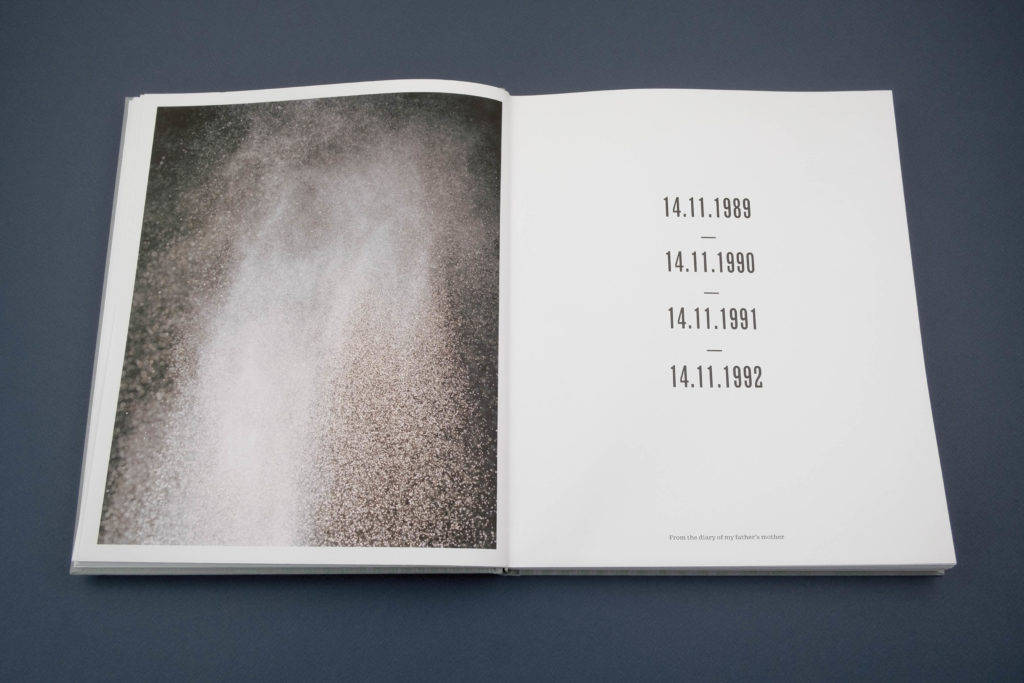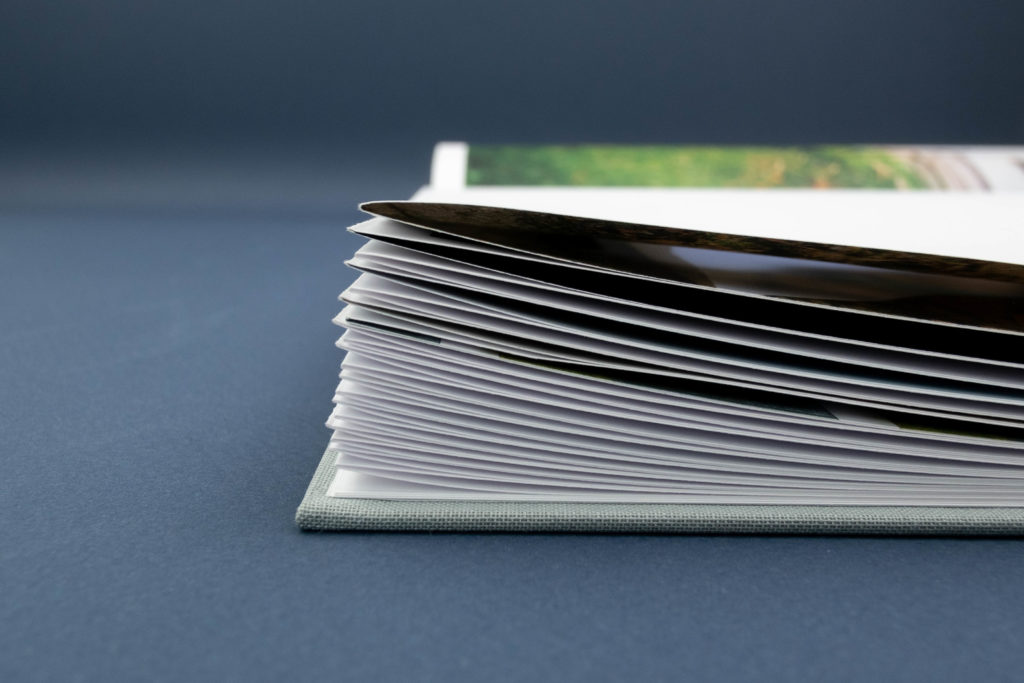Peter Pflügler (AT) is an Austrian visual storyteller based in the Netherlands. His work centres around the dynamics of secrets, intergenerational trauma and silence. With the help of photography, video and text, he aims to resurrect the unseen, the unknown and the hidden. In the end, he does not believe in secrets. Peter has recently published ‘Now is not the right time’ together with the Eriskay Connection. In this publication, he takes us on an intimate journey through the labyrinth of a family secret. The suicide attempt of his father was concealed for almost twenty years. And yet, he has always somehow known.
I have the sense that the photographic medium is appropriate for the building of a narrative that contains secrets, even if it deconstructs them. Do you think your work has a reference to the medium itself?
Photography is for me in a way a contradicting medium. On one hand it always suggests some sort of truth and a certain directness, since it captures what “is there” in front of the lens, meaning in front of our eyes. But the interesting thing is what happens in the process of making the image as well as what happens in the act of looking at the photograph. Photography is as much about what is not there, as it is about what is depicted. It can challenge the way we perceive the world, by interfering, contextualizing, editing, all the possibilities we have as photographers. For me this is similar to language. Our words are a starting point, but what about the subtext, what about the tone of voice, our gaze while speaking, our body language while we talk? The words are a container, a transporter, but what is in there? In this comparison, I am more interested in the subtle trembling of a voice, then in the actual spoken words.
‘Now is not the Right Time’ is a long term project, it has taken you 5 years to complete. Is this a regular feature of your practice? Would you like to share with us how the production has been distributed over the years? Did you try editing the work periodically to see how it was shaping up or what was missing?
It was a slow process yes, and that was very necessary. At the beginning I was fighting against the idea that this is a personal project, or even a healing, therapeutical process. I tried to be a distant investigator, a journalist. And my first images were a bit like that. I documented my home, my parents, it was very straight forward documentary photography. Later I worked a lot with archival images. Both strategies were necessary but did not really end up in the final body of work. Only after 2-3 years of working that way, I understood that I needed to interfere in the scenery. I started to understand that it was not enough to simply photograph the traces of the secret, its containers. I needed to rub against these traces, re-arrange them, bring them out of balance, recontextualize them, reform them a bit. It felt like constantly trying to find ways to suggest what had happened, without naming it. This is why I used symbols, or metaphors. My starting point into this approach was this idea: My father went into the woods with the intention of never coming back. He did come back, but he brought the woods with him.
So, I tried to photograph that. Another important aspect was balance and the difficult task of keeping a secret. A secret is not a passive, calm thing, but a very active monster trying to reach the surface. It takes effort to keep it hidden, it takes effort to balance daily life. This balancing act is also a recurring symbol in my work. Once I found this new methodology, it simply felt right, and the images started to form the project. It also helped me to acknowledge the fact that the project could be both: universal and yet deeply personal, therapeutical, healing.
What are the possible dynamics between photography and text? How and when do you think that they enhance each other?
Photography and text are like siblings that love each other but fight a lot. Sometimes they work together, and the love shines through, sometimes it is simply a fight and they better stay apart. In my project, I added the text very late in the process and it was a personal necessity to do so. My visuals represent my state of growing up, while the secret was still concealed. They are about knowing without knowing, they are about sensing, not understanding. I realized that I would prolong the circle of silence and the heavy weight of confusion if I do not offer my audience the relieve of clarity. So, I added text. And yet, this contextual layer would interfere with the experience of the visuals if it would be immediately accessible. That is why the text is “hidden” in the book, between the pages. This mimics my personal journey: First sensing, then, by investing work, one can find out all the story and details.
Ι think your book has a French fold binding, right? Seems to fit the project perfectly. Could you tell us more about the design of the book? Several young photographers complete a body of their photographs and then consider the next step as far as producing a book is concerned. What would you suggest to them?
Every project, every person is different as well as what they both need. Suggestions are difficult, but I gladly share my journey in this. I am a photographer, not a designer, not even a very good editor. Finding this out and accepting it was a freeing experience. I brought all my material to my designer, Sybren Kuiper, and after a very long, intimate and wonderful talk there was enough trust to simply hand the material over to him and allow him to find a design that would fit to what we agreed on that the book should communicate. The book is his design, the text between the pages is his idea, it is also his edit. I am very grateful for this collaboration.
Could you show us a documentation photo of this project on the wall of a festival or gallery that you have recently exhibited and is representative? There are photographers who mainly publish books and others who prefer mostly shows. You seem to enjoy both. How does it feel to see your work displayed in different environments?
I really enjoy seeing my work in different contexts. I do somehow believe the ideal form for “Now is not the right time” is the book. I am beyond grateful and happy that it became the object it is now. But more and more I am also curious to find ways to translate my work into installations. I loved what the amazing team of Circulation(s) in Paris came up with. The images “float” in front of the wall, and text on the wall is partly hidden by them. Similar to the experience of the book, the audience needs to get close and look behind the images. Lovely.
What were the key elements to your photographic education? I don’t just mean photographers and schools—I’m thinking of key life experiences or other forms of art.
Photography came late to me. I started to study and take my first pictures when I was already 30. Before that, my first steps into creating were writing and dancing. Later I made some short films and tried to get into the film world. Somehow it feels that I can now make use of all these previous chapters in my life. This is a lovely thought for me: Every experience, every failure taught me something and shaped myself and the direction of my life.
Can you give us some info about how Photography is perceived as a medium of art in your homeland? What do you appreciate the most?
I don´t feel like I can answer this question sufficiently. I started photography when I moved to the Netherlands. I am only now slowly starting to reconnect with my home country Austria in a professional way, and I am looking forward to that. I have the feeling that there are a lot of fresh and interesting ideas and movements.
What is the biggest difference in the way you perceive photography today compared to your early days at university or your first shots?
The biggest difference is that I now don´t believe in the direct way anymore. I used to have an idea and then try to execute it. Which mostly failed in the sense that it often felt banal or empty. Now an idea is a great starting point, and then while trying to execute it, I will most certainly understand that it won´t work. And this is lovely, because I can adapt, I want to stay flexible to what the situation, the scenery, the person is offering in this very moment. It is like getting lost on the way to a certain place and arriving at an even more interesting place once you accept your lostness.
More on his website















